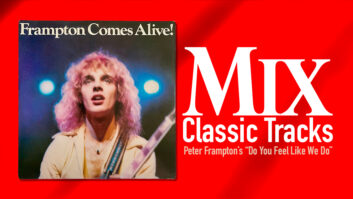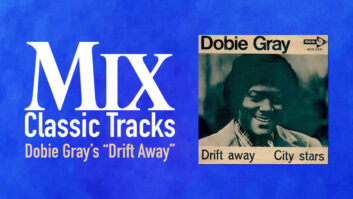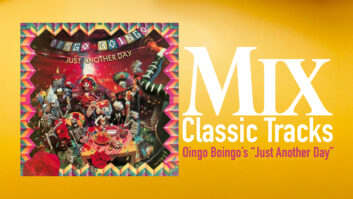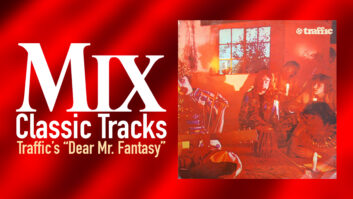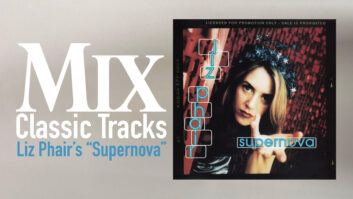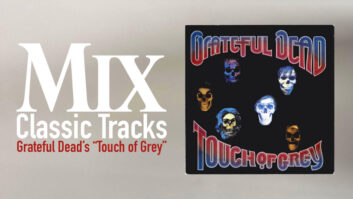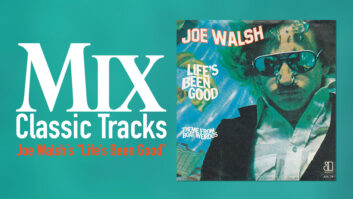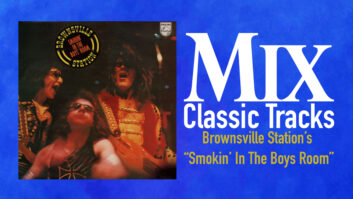
Eddie Money burst onto the scene at an interesting time. The new wave was in full flower, with countless bands drawing on ’50s rock ’n’ roll, the British Invasion and various strains of R&B, mixing them with punk energy. At the same time—late 1977, early ’78—commercial juggernauts such as Fleetwood Mac and The Eagles were sometimes combining bright melodies with slashing guitars more identified with hard rock. A third popular strain was the blue-collar rock of Bruce Springsteen, John Cougar Mellencamp and Bob Seger. Eddie Money drew from all those worlds.
The Brooklyn-born son of a New York City policeman, Eddie Mahoney was on the road to becoming a cop himself when his love of music and his embrace of the countercultural lifestyle prevalent in the late ’60s, led him to leave the East Coast and relocate in Berkeley in 1968. It wasn’t long before he’d become “Eddie Money” and was fronting a succession of groups who plied their trade at long-gone nightclubs such as the Longbranch Saloon and the Keystone Berkeley. Eddie was a natural—confident and charismatic, with a classic, slightly raspy voice perfect for rock and soul tunes, but which he could also smooth out to sound vulnerable for ballads. He grew up digging the Beatles, Stones, Kinks, Motown, Otis Redding, James Brown and the blue-eyed soul of the Young Rascals, and he brought traces of each of them to the stage as he developed his sound.
He was “discovered,” if that’s the word, at one of Bill Graham’s Tuesday night Sounds of the City local band showcase concerts at Winterland in San Francisco in the fall of 1976. He signed with Graham’s newly formed management company, Wolfgang Productions, which also handled Santana, then signed a deal with Columbia Records, and in the summer of 1977 was shipped down to Los Angeles’ Record Plant to cut his first album.
“I waited a year—we had a lot of trouble with it,” Eddie told BAM magazine in the fall of ’77. “Bill Graham said it was like the Hundred Years War getting a record out of me, but I wasn’t ready to go with whoever they felt like putting me with. I think it was just fate from God that I got [producer] Bruce Botnick.”
Or the intervention of Columbia’s A&R department working in conjunction with Wolfgang Management’s Mick Brigden. Botnick already had amassed stellar credentials during many years working at Sunset Sound and other L.A. studios—he was an engineer on the Beach Boys’ Pet Sounds, all The Doors’ albums (he also produced L.A. Woman), and acts as varied as Dave Mason, Weather Report, John Sebastian and the Paul Butterfield Blues Band. In 1977, he was working as a staff engineer for Columbia in L.A.
“Right next to my office at Columbia was Ellen Bernstein [A&R], and Eddie was her artist,” Botnick remembers. “One day she said, ‘I’ve got this great new artist—why don’t you listen to it and see if you’re interested.’ I immediately heard ‘Two Tickets to Paradise’ ‘Baby Hold On’ and ‘I Wanna Be a Rock and Roll Star,’ and I thought it was really good. I went up to San Francisco and met with him and we talked about style and the music he liked and the sounds he related to. With that in mind, I said, ‘How about Andy Johns [to engineer]? He’s been recording Led Zeppelin and he’s living in L.A. and he’s a wild and crazy guy.’”
What a score for an up-and-coming artist! Besides engineering several Led Zeppelin albums (yes, he recorded “Stairway to Heaven”), the transplanted Englishman’s incredible credit list also included Blind Faith, Free’s early records, Ten Years After’s best albums, Jethro Tull’s Stand Up and Living in the Past, Traffic’s John Barleycorn Must Die, the Stones’ Exile on Main St. and even Television’s extraordinary 1977 debut, Marquee Moon. Asked if he had any trouble deferring to Johns on engineering matters on the album, Botnick laughs and notes, ‘He’s Andy Johns! I wanted Andy to be Andy. That’s why you hire someone like that.
“The only thing I had a problem with is Andy likes to listen incredibly loud, and I had to have him constantly turn it down, which irked him—he thought I was cramping his style. He was used to blasting it. Those Hidley Record Plant monitors could handle quite a bit, but even so, I think we blew up a few.”
Classic Tracks: Steppenwolf’s “Born to Be Wild”
Though Eddie had a solid bar band backing him at the time, Botnick decided to record him with other players, calling up drummer Gary Mallaber and bassist Lonnie Turner from Steve Miller’s red-hot group, along with keyboard ace Alan Pasqua (“from my Tony Williams jazz fusion days,” Botnick says) and another fine bassist, Robert “Pops” Popswell of The Crusaders. In the lead guitar slot, however, Botnick stuck with Eddie’s main foil, Jimmy Lyon: “He was half of Eddie,” Botnick says, “a phenomenal guitarist and a very interesting and intelligent guy. I really think he was one of the best of that era, with great sounds and great ideas. He was very modest, very focused, and also a really good arranger.”
The repertoire for the album was the cream of the originals Eddie and his band had been playing in Bay Area clubs night after night (including a couple that dated back to his first major band, the Rockets), plus a soulful version of Smokey Robinson’s “You Really Got a Hold on Me.” Once the core band was assembled in L.A., “we went in for two or three days of rehearsal to work out the charts, and then went right into the Record Plant and recorded almost everything live,” Botnick says. “Everybody set up together in one room, with Eddie in a little iso booth we made, singing and directing the band.”
In those days the Record Plant was still in its original location at 3rd and La Cienega in L.A. and was owned by Chris Stone and Gary Kellgren. The Eddie Money sessions took place in Studio C, the biggest room in the complex, which had a 20-foot ceiling “and was great for rock ’n’ roll, with a black tile floor and brick wall,” recalls assistant engineer Mike Clink, who would go on to become a major engineer and producer himself. “We had Gary’s drums set up about three-quarters of the way out to the back end of the room. We gobo’d off the bass in the room, and Lonnie sat in a folding chair being Lonnie, pretty close to Gary.” The board in Studio C was a classic 24-input API, and the album was recorded to a 3M-79 24-track.
Both Botnick and Clink marvel at the simplicity of Andy Johns’ sonic approach, which used relatively few well-placed microphones. Botnick notes, “On the drums, I remember he took two [Neumann] U87s and placed them about ten feet behind the drums, and we used a compressor on it that really sucked it, and then you carried that on two of the tracks and mixed that into the drums, so you get the drums to have power and space to them.” Besides the 87s behind the drums, Johns also used a pair of 87s for drum overheads.
“He was a little intimidating because he was 6-foot-4 or so,” Clink says, “very English, polished but gruff at the same time; very loud. And he had these American flag clogs that he wore on that particular session, and when he would run out to the studio from the control room, he would leave his clogs off at the door and he would run and he would slide across the floor in his socks, right to the overheads, move them a couple of inches, and then run back into the control room.”
Another essential element in the Johns approach was “he used lots of limiters on the instruments,” Botnick says. “He had lots of 1176s, some Pultec EQs and, of course, what was in the API board. It was so straight-ahead it was ridiculous! There wasn’t a thing that wasn’t limited.” Clink also remembers, “We used a [British-made] Pye limiter that had been sitting on a shelf at the Record Plant for years until Andy came in and used it.”
Another memory from Clink about those album sessions: “Jimmy [Lyon] had something wrong with his hand. His hand was swollen to twice its regular size—I guess he had some kind of infection. Still, he made it through those rhythm tracks, and by the time we got to the solos, the swelling had gone down from the antibiotics or whatever.”
All of Eddie’s keeper vocals and most of Lyon’s guitar solos—including the blistering coda to “Two Tickets to Paradise”—were recorded after the live tracking dates. (Eddie sang into a Neumann U47; Lyon had a single Shure 57 on his amp, plus a compressor.) “Most of what’s on the album are full takes, with a few overdubs,” Clink says. “There was some editing on the 24-track, but not much.”
The album was mixed on the larger API console in Record Plant Studio D. There wasn’t too much post-processing added; mostly reverb from EMT 140 plates and “and old [EMT 250] digital reverb that looked like R2-D2,” Botnick laughs. “Andy started the mix and got maybe 20 percent through it before he had to leave. Rod Stewart called [for Johns to work on the Blondes Have More Fun album], and there was nothing I could do to stop him. So I used some of the very good rough mixes that Andy had done and tweaked them up a bit and it came out really well.” Botnick also worked on the single version of “Two Tickets to Paradise,” editing more than a minute out of it and also adding some harmony guitars and new vocals “to give it a little more radio,” as he puts it. “In hindsight, I’m not sure I did the right thing.”
The anthemic “Two Tickets,” released in the early summer of ’78, was actually the second single from the best-selling Eddie Money album—the first, “Baby Hold On,” had made it all the way to Number 11 in the winter, while “Two Tickets” stalled at Number 22. But it’s the better song, and it quickly became his signature tune—indeed, he has even written a musical with that title based on his life story.
And though Eddie hasn’t had any big hits since “Take Me Home Tonight” and “I Wanna Go Back” in 1986, he still tours incessantly, bringing down the house at every stop. “I wouldn’t be at all surprised if someday, somehow he came up with another big hit,” Botnick says. “He’s really a Top-40 guy.”
This Classic Track was first posted October 1, 2012.
